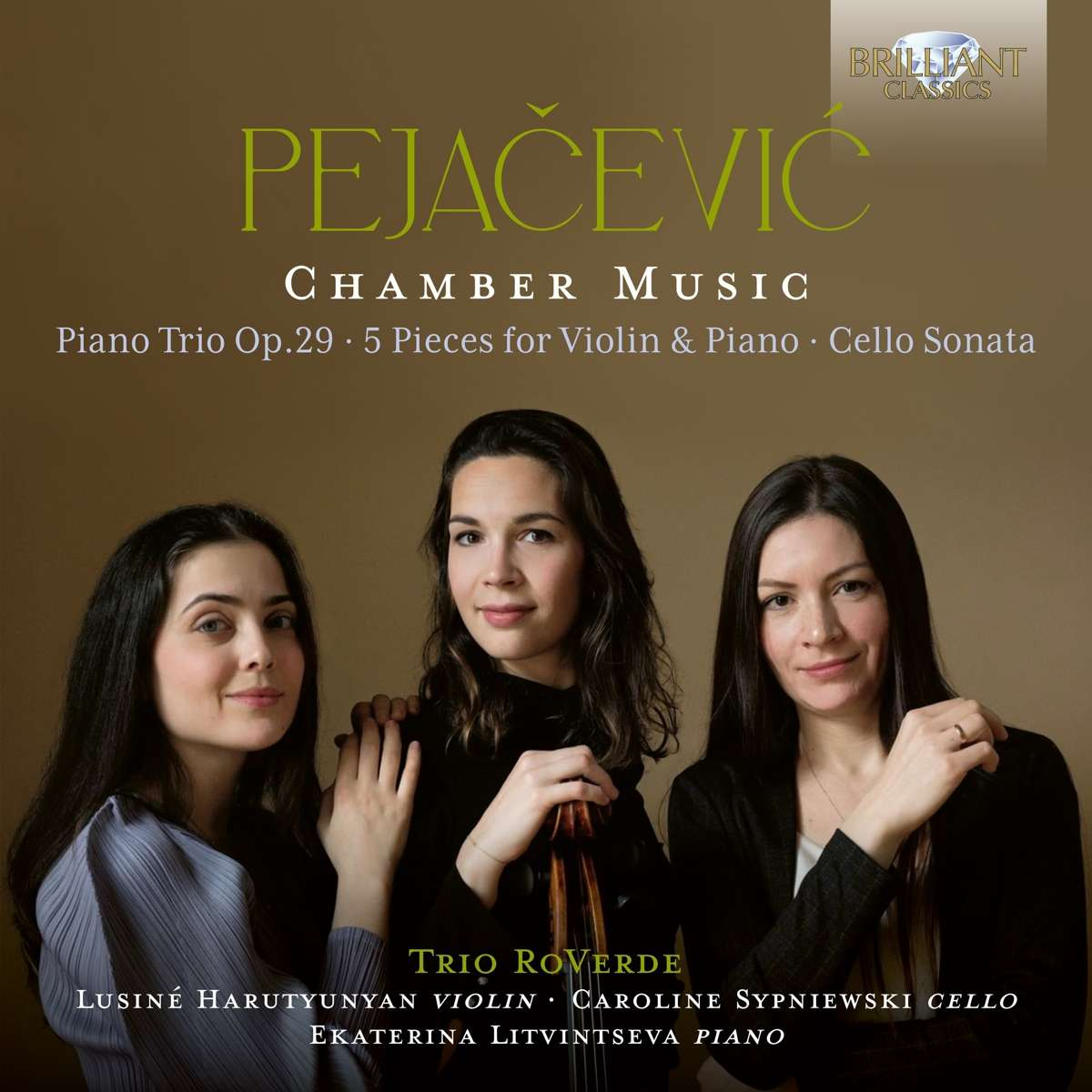Košík
Váš košík je momentálne prázdny.
Pejačević: Chamber Music
12,00 €
Formát:
CD
Dostupnosť:
dodacia doba 7-28 dní
Katalógové číslo:
97020
EAN kód:
5028421970202
Autori:
Dora Pejačević
Interpreti:
Caroline Sypniewski, Ekaterina Litvintseva, Lusine Harutyunyan, Trio RoVerde
Vydavateľ:
BRILLIANT CLASSICS
Zoznam skladieb
Dátum vydania: 2. 2. 2024Cello Sonata in E Minor, Op. 35
1 I. Allegro moderato
2 II. Scherzo. Allegro
3 III. Adagio sostenuto
4 IV. Allegro comodo
5 Canzonetta, Op.8
6 Menuett, Op. 18
7 Romance, Op. 22
8 Elegy, Op. 43
9 Meditation, Op. 51
Piano Trio, Op. 29
10 I. Allegro con moto
11 II. Scherzo. Allegro
12 III. Lento – Allegretto
13 IV. Finale. Allegro risoluto
Popis
The pianist Ekaterina Litvintseva won critical praise for her solo album on Piano Classics (PCL10226) of piano music by Dora Pejačević: ‘You owe it to yourself to make the acquaintance of Dora Pejačević if you haven’t done so already.’ (Fanfare, May 2022)
With her colleagues in Trio RoVerde, she now turns to the Croatian composer’s chamber music. The Cello Sonata dates from 1913, the same year as Pejačević wrote the first piano concerto by any Croatian composer. Like Brahms’s First Cello Sonata and Elgar’s Cello Concerto, it is cast in a moody E minor, with a yearning character are established from the outset by a long-limbed cantabile melody for the cellist. Pejačević proceeds to develop a passionate dialogue between cello and piano through an assured handling of sonata form.
The following sequence of miniatures for violin and piano evokes the world of the salon in their titles, but the Schumannesque warmth of the Romanze Op.22, from 1907, is replaced by a style at once more wistful and refined by the time of the Elegie, which she wrote in the same pivotal year (1913) as the Cello Sonata. From seven years later, the Meditation Op.51 makes no retreat into solipsism but paints a three-minute sketch of a new and uncertain world.
From 1910, the C major Piano Trio returns us to safer ground. Pejačević demonstrates a notable sensitivity in writing for a tricky combination of instruments: strong melodic writing for the string instruments counterbalances the weight of the piano part, which is in any case deftly pointed and touched by the composer’s experience as a performer. If Pejačević’s chamber music has not taken its place in the standard repertoire of late-Romanticism, it is our loss, and one that an increasing number of performances and recordings such as this one are belatedly redressing.Prihlásenie
Newsletter



